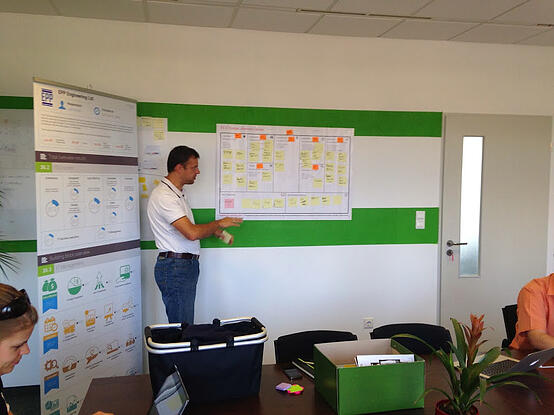
For Managed Services Providers (MSPs) the ultimate goal is becoming the ‘trusted advisor’ on all things IT.
We’ve created a process which enables MSPs to earn this trusted advisory role as fast as possible. The key is to understand the client, and in turn help them understand their situation and their opportunities.
Looking into the 7C Methodology and processes can be a tad overwhelming at first, we know. It’s so effective because it’s comprehensive, so there is a learning curve. However in our continuous effort to make everything as simple as possible, we’ll start by emphasising a couple of core concepts.
One of the crucial elements is the client reframing process. From the client’s perspective it’s a discovery process, the goal of which is to make the necessary transformation to start working with the client at a new level. The key component of the process is the Reframing 7C canvas workshop, where we ask questions of the client’s business in order to help the client rethink basic assumptions about IT and its management. Normally such a fundamental shift is a tough, very high level process, but if you’re properly prepared to ask the right questions and challenge the client, it can be a very easy and straightforward process.
Client Discovery
So to be able to conduct the workshop - the central element - with confidence, we have to be as informed as possible regarding the client, as well as the nature of the company itself: the key players, industry etc. We need a streamlined data acquisition process to be able to immediately focus on what matters. With an established client this is much easier...it’s the new for whom you must prepare a bit more.
If you peruse the 7C Report, you’ll find it entails all this needed information about your client in IT function and their IT management perspective.
To be able to get the necessary data from the client and to be able to make the analysis and build the report, you need input. This input comes from the questionnaire you get your prospective client to fill out - not the client's ‘IT guy’, or service provider, but the CEO of the company -the one responsible for the IT in general at the senior level. We’ve provided several helpful methods encourage them to fill out this questionnaire. If it seems like a big deal for them you can infer either that they do not trust the value of the process, or that they see little value in IT generally. In either case you can make the transition with the workshop, so do your best to get started with the questionnaire.
This is the discovery of the client that prepares for the workshop.
Reframing Workshop
In the workshop you are going to use the 7C Canvas as a companion. It goes on your wall and comprises all the building blocks of the competitiveness of IT.

This is meaningfully accessible to the client: there is the IT execution segment, and the IT management - both cost-effectiveness and the competitive edge. It creates a conducive platform for talk about the company's challenges, issues and the possible IT related solutions.
First of all the Canvas will assist your confidence in the meeting, with the information on the wall 100% aligned with the report, scores, etc.
Secondly, it outlines the structure of the session, which in turn helps you to facilitate it.
Thirdly, it engages the clients in conversation - this is a workshop, and your goal is to work together and strengthen the relationship.
Fourthly, unlike some workshops, the Canvas remains, a good basis for further conversation between the CEO and the rest of the company.
The outcome of the meeting is some initial action items involving overall objectives, directions, and possible initiatives or projects.
Action Plan
Your next duty is to build a comprehensive action plan for them based on the results, and set a possible achievable target score, and to put everything in context, set priorities, state realistic expectations about IT project sizes, IT budgets, possible results, and the necessary capacity from the senior level or from staff.
So now you are becoming a natural leader of their Global IT, not just the infrastructure, background, support etc, and you can come up with big projects and industry changing initiatives with IT. This is the process of how to start your work, what you need to achieve the first quarterly plan.
As you start the first company-wide quarterly plan (the cornerstone and "trial" of the MSP 2.0 model), you are incurring more information, more trust, and even more loyalty.
Here’s where we kickstart the MSP 2.0 onboarding process to implement all necessary parts of the model - where you are able to start the complete IT management operation with the client.
Conclusion
Maybe you see this is a long process, but slow is fast and fast is slow in this arena...the initial investment of preparation will soon lead to a pivotal element, the inflection point which is the workshop. You get the client’s attention and from there are able to reframe them. Discovery and the preparation, workshop, action plan, and finally trial quarterly management - these five components give you the proven process of client reframing.

